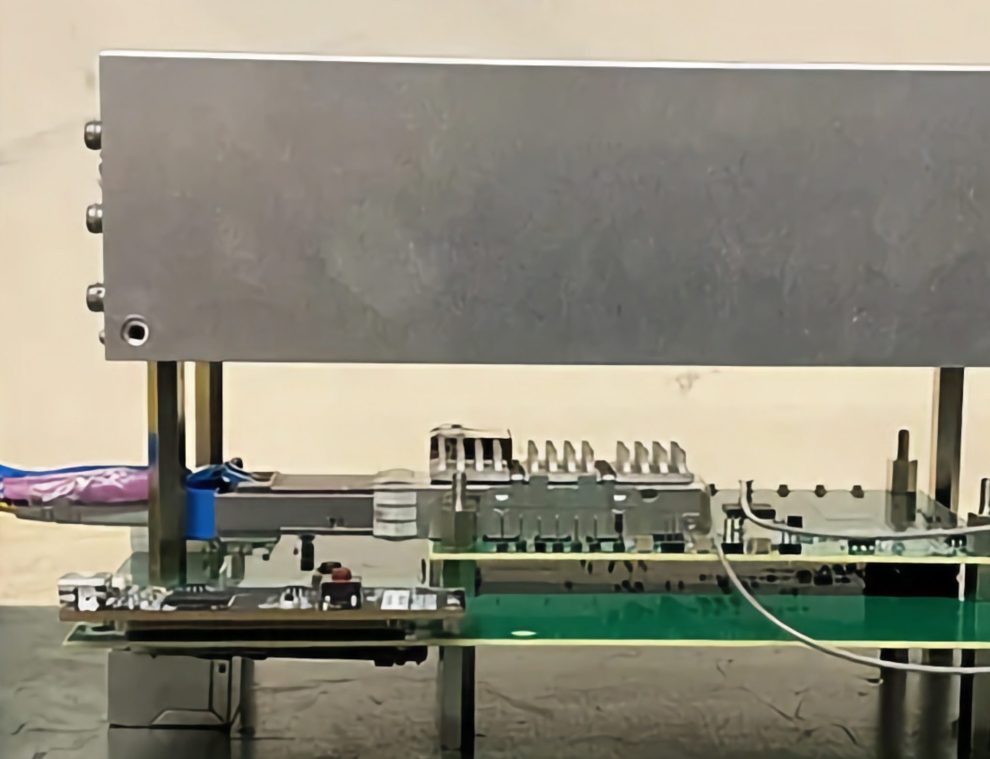NEC has developed and demonstrated a radio-over-fibre system utilising a 1-bit fibre transmission method. The innovation could make it affordable to build stable millimetre-wave communication networks for ’Beyond 5G’ (B5G).
The 1-bit method allows high-frequency analog signals to be transmitted using inexpensive electrical-to-optical converters intended for general-purpose digital communications. This enables the realisation of compact and low-cost distributed antenna units.

“As a result, a stable millimetre-wave communication environment can be inexpensively achieved in high-rise buildings, underground malls, factories, railways, indoor facilities, and other obstacle-laden environments,” NEC said in its announcement.
High-speed wireless leveraging millimetre-wave technology is expected to be pivotal for future mobile networks. Around 80 percent of mobile traffic occurs indoors, so millimetre-wave is being explored as an indoor solution.
However, millimetre-wave has significant propagation loss and requires high linearity. Line-of-sight between base stations and devices is imperative to achieve sufficient quality of service.
Dense installations of distributed antenna units that transmit and receive data directly with devices—avoiding obstacles—is known to be effective. But the size, power consumption, and costs of deploying enough units has proven challenging.
NEC’s new radio-over-fibre (RoF) system and 1-bit transmission method aim to overcome these issues.
Analogue vs digital: Finding the best of both
Conventional RoF systems are categorised as digital or analogue. Digital RoF transmits digital signals from the radio unit to the distributed antenna over fibre. The antenna must be equipped with a digital signal processor and digital-to-analogue converter—driving up power and costs.
Analogue RoF generates high-frequency analog signals in the radio unit which are transmitted over fibre to the antenna. This simplifies the antenna’s configuration by removing the need for a processor and converter. However, it requires expensive dedicated analogue signal converters with high linearity.
NEC’s 1-bit fibre transmission method converts the high-frequency analog signals into 1-bit pulse signals transmitted over fibre. The desired analogue signal can then be reproduced through a filter.
“For 1-bit RoF using this method, an affordable general purpose electrical-to-optic converter for digital communications can be utilised, as is the case with digital RoF,” NEC explains. “At the same time, like analogue RoF, there is no need for the DA to be equipped with DSP or DAC.”
“As a result, 1-bit RoF is a system that combines the advantages of digital RoF and analogue RoF.”
The main challenge to realising the 1-bit RoF system was developing a modulator with a high signal-to-noise and distortion ratio for converting to 1-bit pulse signals. NEC developed a “vector decomposition method” to achieve this for downlink traffic.
For uplink, NEC created a “digital reproduction method” to cancel distortion from the 1-bit conversion and regenerate the original signal. This suppressed degradation in both directions.

NEC built a prototype 1-bit RoF system for the 40GHz band with a radio unit and compact distributed antenna. Tests confirmed the system’s compliance with mobile standards.
“The newly developed system makes it possible to install compact, low-cost DAs in high density,” NEC said. “In addition, it is expected to improve the millimetre-wave communication environment by ensuring the line of sight between DAs and terminals.”
The combination of 1-bit transmission and RoF systems developed by NEC enables stable millimetre-wave networks to be built affordably in environments like high-rises, malls, factories, and railways.
“It will therefore promote the uptake of high-speed and large-capacity communications using millimetre waves for Beyond 5G/6G,” NEC stated.
The company says it will continue developing high-speed and high-capacity technologies as operators explore millimetre-wave and other spectrum to increase bandwidth for future 6G networks.
Source: TELECOMS




















Add Comment